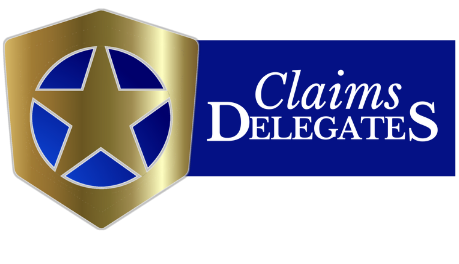
Why You Should ALWAYS Bill Your Client FIRST
Bill Your Client
It sounds simple, elementary even. What business expects to get paid without billing their client?
Restoration guys, that’s who.
I had a conversation with a client of mine yesterday regarding a couple outstanding mitigation invoices. He asked if I could help him with the insurance adjusters in order to get paid.
One loss was from New Year’s eve! Seeing as it is now mid-way through June, this might be a problem.
Apparently, the adjuster has so far completely ignored my client’s estimate (more on this in a moment) and has written his own “mitigation” items into one bigger estimate for the entire claim. This was a large loss and I think the adjuster was thinking that if he lumped everything together, that his insured would just take this big check and walk away.
At this point, the “mitigation” items in the adjuster’s estimate are $11,000 less than my client’s “estimate.” Ouch. This might be a problem, no?
So I asked him, “How long ago did you bill your client? How long have they been sitting on your bill?”
His answer told me everything I needed to know. He had never billed his client. At this point, six months after services had been rendered, my client was still treating his BILL like it was a negotiable document.
There is no such thing as a mitigation ESTIMATE
When you perform emergency services, you’re providing a needed service. There is no bidding process. There is a need and you’re fulfilling it – usually on a Friday afternoon, right before a big holiday weekend.
As such, there should be very little negotiation when it comes time to collect for those services. Your work authorization should state your fees clearly, and your documentation process should provide ample transparency and audit opportunity.
An emergency services contract is essentially a Time and Material agreement. You agree to provide a set of services according to an agreed upon fee schedule. It’s that simple.
Just because you develop your INVOICE using the Xactimate “estimating” program, does NOT mean that your INVOICE is an ESTIMATE. It’s not. So stop treating it like one.
Costs have been incurred
The problem is that we allow adjusters to widdle our BILLs down because we don’t lock them in with our actual clients. If we don’t invoice our clients, they don’t “incur” the costs of mitigating their loss. And since their insurance policy states that they will be reimbursed for reasonable “costs incurred”, their insurance adjuster is under no obligation repay them (or to pay US).
That means that until our clients have been billed for the services we provided, the adjuster can mess with us as much as he/she wants. We’re allowing a negotiation to occur which should be a transaction.
The longer you go, the harder it gets
What most restoration folks don’t understand is the incredibly complicated machinations that adjusters go through on every claim. It’s actually fairly cumbersome. And adjusters are relentlessly bombarded with new restrictions and guidelines to follow.
One of the things that adjusters must do is set and adjust the reserves. The reserve is an amount of cash, usually a percentage of the total anticipated claim costs, which the insurance company must remove from their general funds (or whatever they call it) and set aside (in “reserve”) to pay the claim.
The reserve number is important because it is one of the ways in which carriers are graded by state and federal regulators. If audits show that a particular carrier is routinely setting aside too little money to pay claims (setting reserves too low), that carrier can receive sanctions. Or worse.
On the other hand, company cash flow can be negatively impacted if reserves are consistently set too high. This pulls real dollars out of the company for the reserve account. This means less money for things like investment and capital expenditures. It also telegraphs to investors the relative health of the company.
Whether it’s too high, or too low, the insurance company is loath to change it once it’s been set. Change is an indication of a problem.
The adjuster is responsible for suggesting a proper reserve amount early on in the claims process, usually within the first couple days. That means that those of us who are able to get clear, defensible estimates to the adjusters quickly, are the ones more likely to get what they want.
With good information about what the total claim will be, backed up by a contractor’s estimate, the adjuster is able to establish a reserve with confidence that he won’t have to adjust it later.
When we start talking about claims that are months old, things get sticky. Past 60 days, the claim has likely already been paid. Often it is closed. If you didn’t get your mitigation invoice in before the adjuster pays it out, you’re likely putting the adjuster in the embarrassing position of having to re-open a claim and adjust the reserves.
The more time that passes before you bill your client, the less likely it is to be paid in full, or on time.
They’re free to ignore you
“But I sent my “estimate” to the adjuster two months ago,” you might be saying. OK. You sent it to him. But you didn’t send it to your client?
What you effectively did was tell him that he was in charge. By sending the mitigation bill to the adjuster, you are asking him for permission. (More on that here) Never ask for permission.
When you send anything to an adjuster without sending to your client, the adjuster is free to ignore you. You are much better off sending invoices and bids to your client – you know, the person on the insurance policy – and requesting that they send it to their adjuster.
It means a lot more coming from them than it does from you.
Don’t fear the sticker shock
I asked my client why they hadn’t sent the mitigation invoice to the client yet.
“They’d freak out,” he responded, “We’re talking about $22,000 here.”
Yes, that’s a lot of money (to most people who don’t fly around in private jets). And what we do is expensive. And dirty. And profoundly unrewarding sometimes. That’s why we charge what we do.
If you’re afraid to bill your client, because you think they’ll freak out, maybe you should take another look at your billing. If you are invoicing according to set procedures and standard industry pricing, what is there to hide from?
Believe me, I understand. I’ve had my share of jaw-dropping moments after hitting “print” and seeing the final totals of mitigation bills. It’s easy to rack up big numbers when you’re renting out dehumidifiers at a $10,000-a-day clip. And that’s “OK”. Your reaction proves that you’re still living among the rest of us common folk.
I remember the largest mitigation invoice I ever created. I didn’t use Xactimate. I had three crews of forty-five working around the clock in a large warehouse for seven days. I had riding extraction machines and temporary facilities set up.
We were basically pushing water around for a week until a temporary roof could be installed to keep the rain and snow from coming in. My bill was $745,000.
I looked at boss at the time with a “are we really going to bill for this” look on my face. He walked through the spreadsheets with me one more time and said, “Yep, send it off.”
We were paid in fourteen days. I was stunned. And the check came from our client. They then turned and started the process with their insurance company. I didn’t talk to an adjuster once.
Properly set expectations
What I learned, after making a little over $100,000 a day for my company, is that the most important step in the mitigation (and claims) process is setting the groundwork. When we educate our clients on the process, and clearly communicate our intentions and provide transparency, they become our allies.
My company had a clear schedule of fees. Our contract was straightforward and simple. “This is what we’re going to charge. And this is when we expect to get paid.” There was no room for back pedaling or horse-trading. My client new on day four that the meter was running at a very high rate.
They, in turn, were able to do their own internal calculations and decide whether to continue with our services or pull the plug. Once I learned that closing this facility would cost the company close to a million dollars a day, I understood their decision to keep us on till the roof was fixed.
And since I had shown a complete open-book policy throughout the claim, they didn’t have to spend weeks auditing my invoice. They knew the total before I even billed them. (It also didn’t hurt that this was a distribution warehouse for one of the largest car manufacturers in the world.)
Start from a position of strength
For all the reasons above and more, you need to promptly bill your client for the services you’ve rendered. This puts you in a position of strength and moral authority.
It’s tough to argue with a detailed mitigation estimate. (and if you want help with that you should check this out). It is what it is. I like to say that Xactimate writes itself. I’m just putting in what I see, or what was actually done.
When you bill promptly, you are simply following through on your promise to your client. You promised to help them with their problem in exchange for a fee. Shying away from that fee, or prematurely negotiating your bill is a sure sign that you believe you’re charging too much.
And if you’re charging too much, why? Stop it.
But if your fee is fair, by all means, please send it to your client as soon as you can.









 Absolutely we do construction estimates in Xactimate.
Absolutely we do construction estimates in Xactimate. 


